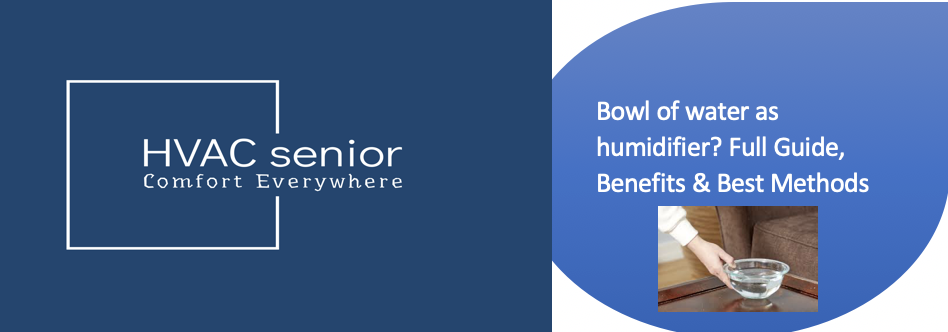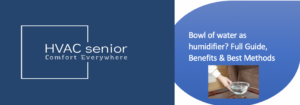Portable air conditioners (ACs) are a popular choice for cooling specific areas in homes or offices due to their flexibility and mobility. However, Air Conditioner Spitting Out Water can be frustrating and potentially damaging.
To effectively address and prevent water leakage in portable AC units, it’s essential to understand its common causes and how to resolve them.
In this article, we will delve into the typical reasons behind water leakage in portable AC units and provide practical solutions to tackle these problems.
If you’re tired of dealing with water puddles from your portable AC, continue reading to find the solutions.
Also read>>>>Best Smallest Portable Air Conditioner
Common Causes of Portable Air Conditioner Spitting Out Water.
Water leakage in portable AC units can be caused by various factors. It’s crucial to identify the specific cause in order to effectively resolve the issue. Here are the most common causes of water leakage in portable AC units:
- Clogged Drainage System
Over time, the drainage system of a portable AC unit can become clogged with dust, dirt, or debris. This blockage prevents the water from properly draining out of the unit, leading to leakage. Regular cleaning and maintenance of the drainage system can help prevent this issue.Same solution can be used for a window ac spitting water.
- Low Refrigerant Level
If the refrigerant level is too low, it can cause the evaporator coils to freeze up. When the unit defrosts, excess water can drip and leak. A professional technician should be consulted to inspect and refill the refrigerant to the appropriate level.
- Improper Installation or Setup
Incorrect installation or improper setup of the portable AC unit can result in water leakage. If the unit is not properly leveled, tilted backward, or placed on an uneven surface, it can cause water to pool and leak. Ensuring the unit is installed correctly is important to prevent this issue.
- Condensation Buildup
In humid environments, condensation can build up more rapidly on the evaporator coils. If the amount of condensation exceeds the drainage capacity of the unit, water leakage can occur. Using a dehumidifier in conjunction with the portable AC unit can help reduce condensation.
- Cracked or Damaged Drain Pan
The drain pan, located under the evaporator coils, collects the condensate water and directs it towards the drainage system. If the drain pan is cracked or damaged, water can leak out. In such cases, the drain pan may need to be replaced to stop the leakage.
By understanding these common causes of water leakage in portable AC units, you can take the necessary steps to resolve the issue. In the next section, we will discuss the solutions for fixing water leakage problems in detail.
👉👉👉Also read: Portable Air Conditioner Venting Options.
- Clogged Drainage System
A clogged drainage system is a frequent reason for water leakage in portable AC units. Over time, dust, dirt, and debris can build up in the drainage system, blocking the flow of water. When this happens, the water has nowhere to go and ends up spilling out of the unit.
To fix a clogged drainage system, follow these steps:
- Safety First: Turn off the portable AC unit and unplug it from the power source for safety.
- Locate the Drainage Tube: Find the drainage hose or tube at the back of the unit; it’s usually a small plastic tube.
- Inspect for Obstructions: Remove the drainage tube and inspect it for visible blockages. Use a flashlight to get a clear view.
- Remove Debris: If you see any debris or clogs, gently remove them using a long, flexible brush or a pipe cleaner. Be careful not to damage the tube.
- Clean the Tube: Fill a basin or bucket with warm water and mild detergent. Insert one end of the drainage tube into the soapy water and flush it to remove any remaining dirt or residue.
- Rinse Thoroughly: Rinse the drainage tube with clean water to ensure all the soap is removed.
- Reattach Securely: Once the drainage tube is clean, reattach it securely to the unit.
After cleaning the drainage system, test the portable AC unit to make sure water drains properly and no leakage occurs. If the problem persists, you might need to seek professional assistance.
Also read: AC not Cooling Below 75.
To prevent water leakage, it’s crucial to regularly clean the drainage system, ideally every few months or as needed based on usage and your environment.
- Low Refrigerant Level
Low refrigerant levels are a common reason for water leakage in portable AC units. Refrigerant plays a vital role in cooling the air by absorbing heat. If there isn’t enough refrigerant, it can lead to inadequate cooling, causing the evaporator coils to freeze.
When these frozen coils thaw, excess water can drip and result in leaks from the AC unit. If you suspect low refrigerant is the issue, it’s wise to consult a professional technician who can examine and refill the refrigerant to the correct level.
Checking and refilling the refrigerant requires specialized equipment and expertise, so it’s not a DIY task. A professional technician can accurately determine if low refrigerant is causing the water leakage and take the necessary steps to fix it.
It’s essential to remember that refrigerant leaks are not common in properly installed and maintained portable AC units. If you’re experiencing water leakage due to low refrigerant, it could signify an underlying problem like a system leak that needs attention. A technician can diagnose and repair any leaks to prevent further water leakage problems.
Regular maintenance, which includes checking the refrigerant level, can help prevent low refrigerant issues. Keeping the unit clean and free from dust and debris can also enhance its overall efficiency and performance.
Also read: HVAC Free on coil freezing up.
- Improper Installation or Setup
Improper installation or setup of a portable AC unit can lead to water leakage problems. If the unit isn’t installed correctly or set up properly, it can cause water to accumulate and leak. Here’s what to consider for a proper installation and setup:
- Leveling: Ensure the portable AC unit is level to prevent water buildup and leakage. Use a bubble level to check that it’s evenly balanced. If the unit is tilted backward or placed on an uneven surface, water might not drain properly, leading to leaks.
- Adequate Ventilation: Portable AC units need good airflow for efficient operation and to prevent water leakage. Place the unit in a well-ventilated area and make sure the exhaust hose is correctly connected and vented outside. Poor ventilation can cause the unit to work poorly and increase the risk of leaks.
- Sealing Gaps: Examine the area around the window or door where the portable AC unit is installed. Gaps or openings can let warm outside air enter the room, causing excess condensation and water leakage. Seal any gaps with weatherstripping or sealant to ensure a tight seal.
- Proper Draining: Check that the unit’s drainage system is set up correctly. Ensure the drainage tube or hose is securely connected and directed towards an appropriate drainage point. Avoid kinks or obstructions in the tube that could block the water flow.
If you suspect that improper installation or setup is the cause of water leakage, consult the unit’s manual for specific instructions and troubleshooting tips. Alternatively, you can enlist the help of a professional installer or technician to ensure the unit is installed and set up correctly.
- Condensation Buildup
Condensation buildup can lead to water leakage in portable AC units, particularly in humid environments. When the portable AC cools the air, moisture in the air condenses on the evaporator coils, forming water droplets.
Here’s how to prevent condensation buildup and water leakage:
- Use a Dehumidifier: If you’re in a humid environment, using a dehumidifier alongside your portable AC can help reduce overall room humidity. This eases the workload on the AC and minimizes condensation buildup.
- Ensure Proper Ventilation: Good airflow is essential to prevent condensation. Ensure the room with the portable AC has enough air circulation. You can use fans or open windows and doors to promote proper airflow.
- Adjust Temperature Settings: Set the portable AC to a comfortable temperature that provides sufficient cooling without overcooling the room. If it’s too cold, it can lead to excessive condensation and increase the risk of water leakage.
- Clean Evaporator Coils: Dust and dirt can accumulate on the evaporator coils over time, hindering their ability to cool the air and drain condensate water. Regularly clean the evaporator coils to maintain optimal performance and reduce the chance of condensation buildup.
By following these steps, you can reduce the risk of condensation buildup and water leakage in your portable AC unit.
- Cracked or Damaged Drain Pan
A cracked or damaged drain pan can lead to water leakage in portable AC units. The drain pan, situated under the evaporator coils, is responsible for collecting condensate water and guiding it to the drainage system.
Here’s how to deal with this issue:
- Inspect the Drain Pan: Carefully examine the drain pan for visible cracks or damage. Use a flashlight if needed to get a better view of the pan’s condition.
- Replace the Damaged Pan: If you find any cracks or damage on the drain pan, it needs to be replaced. Contact the manufacturer or consult a professional technician to get the right replacement.
- Proper Installation: When installing the new drain pan, ensure it’s correctly aligned and securely in place. Follow the manufacturer’s instructions for the correct installation procedure.
- Check for Leaks: After installing the new drain pan, test the portable AC unit to confirm that water is no longer leaking. Keep a close eye on the unit for any signs of leakage and make adjustments if necessary.
Replacing a damaged drain pan may require some technical know-how. If you’re not comfortable doing it yourself, it’s wise to seek the help of a professional technician to ensure a proper installation and prevent further issues.
Regularly inspecting the drain pan for damage and addressing it promptly can prevent water leakage and maintain your portable AC unit’s functionality.
Now that we’ve covered the common causes of water leakage and their solutions, let’s move on to the next section, which discusses how to fix water leakage issues in portable AC units.
Also read>>>>Air Conditioner Brands To Avoid.
How to Fix the issue of Air Conditioner Spitting Out Water.
If you’re dealing with water leakage in your portable AC unit, here are steps to address the issue, depending on the cause:
- Cleaning and Unclogging the Drainage System: If a clogged drainage system is the problem, clean the drainage tube or hose regularly to remove debris and obstructions. This ensures proper water flow and drainage.
- Checking and Refilling the Refrigerant: When low refrigerant is causing the issue, consult a professional technician to check and refill the refrigerant. They have the expertise and equipment to handle this correctly.
- Proper Installation and Setup: Ensure your AC unit is properly installed and set up. Check for levelness, provide adequate ventilation, and seal any gaps. These steps prevent water leakage due to improper installation.
- Removing Excess Condensation: In humid conditions, excess condensation can lead to leaks. Use a dehumidifier alongside your portable AC to reduce room humidity, minimizing condensation and water leakage.
- Replacing a Cracked or Damaged Drain Pan: If the drain pan is cracked or damaged, it needs replacement. Contact the manufacturer or a technician to get the right replacement and ensure proper installation to prevent further leakage.
If you’re unsure about fixing the issue, it’s best to consult a professional AC technician who can diagnose and address the problem effectively.
Regular maintenance, including cleaning and inspections, can also help prevent future water leakage problems. Keeping your portable AC unit in good condition ensures a cool and comfortable environment without the worry of water leaks.
Also read: No Condensation from AC.
Frequently Asked Questions (FAQs).
Why is Air Conditioner Spitting Out Water?
- Answer: Water leakage in portable AC units can be caused by various factors, including a clogged drainage system, low refrigerant levels, improper installation or setup, or a cracked/damaged drain pan. Identifying the specific cause is crucial to resolve the issue.
How can I fix a clogged drainage system in my portable AC unit?
- Answer: To fix a clogged drainage system, follow these steps: Turn off the unit, unplug it, locate the drainage tube, remove it, check for blockages, clean the tube, and ensure it’s properly reattached. Regular maintenance, including cleaning the drainage system, is essential to prevent future water leakage.
What should I do if my portable AC has low refrigerant and is leaking water?
- Answer: If low refrigerant is causing water leakage, consult a professional technician to check and refill the refrigerant to the appropriate level. This process requires specialized knowledge and equipment. Low refrigerant levels are not common and may indicate an underlying issue like a system leak that needs professional attention.
How can I address water leakage due to a cracked or damaged drain pan?
- Answer: If your drain pan is cracked or damaged, inspect it for visible issues, and if damage is present, contact the manufacturer or a professional technician to obtain a compatible replacement. Proper installation of the new drain pan is essential to prevent further leakage.
Conclusion.
Addressing the issue of Air Conditioner Spitting Out Water involves understanding the common causes and implementing specific solutions. Regular maintenance, including cleaning the drainage system, checking refrigerant levels, proper installation and setup, and addressing issues like cracked drain pans, can prevent and resolve water leakage.
By following these steps and seeking professional help when needed, you can enjoy the cooling benefits of your portable AC without the hassle of water leaks.
Remember, a well-maintained unit not only ensures comfort but also safeguards your surroundings from potential damage caused by water leakage, making your cooling experience worry-free and efficient.









